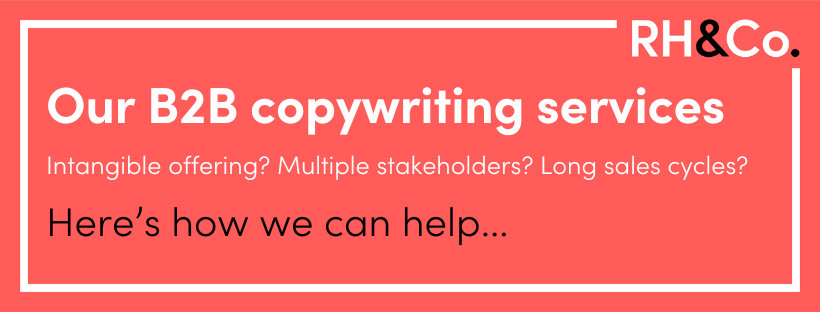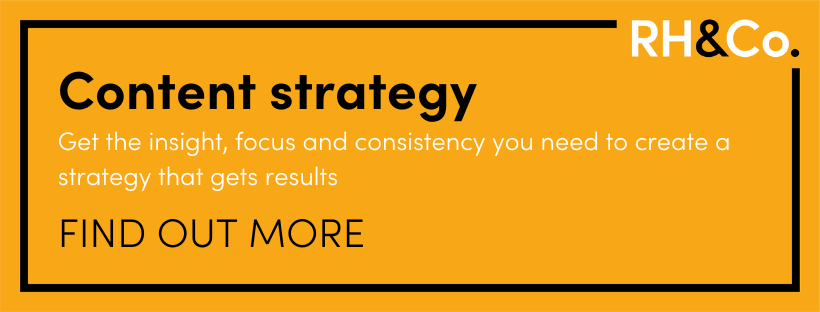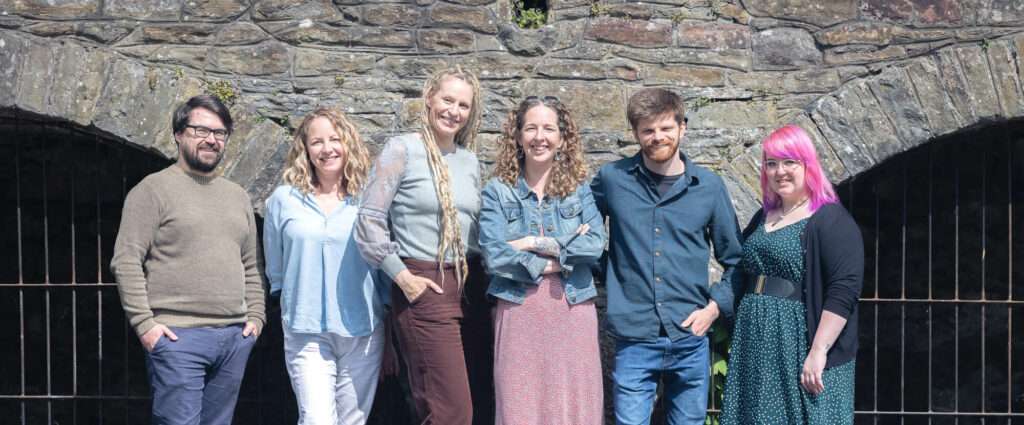

How to sell an intangible offering to a B2B audience
Do you ever wish you sold shoes? Or that you were responsible for marketing a 5 star hotel? Something nice and tangible, with a consumer audience and a pretty well defined value hierarchy.
Inevitably it gets much harder when you’re selling a B2B service with as many permutations as leadership development, or as hard to define as ESG consulting. Or maybe you sell something that’s concrete at face value – like offshore wind engineering – but it’s hard to define what makes you different to that other engineering company with a more established reputation.
For the marketers and salespeople tasked with generating and closing leads in these sorts of businesses, there are so many more hurdles to jump through. In our new series, we’re exploring three of those challenges and how best to tackle them. Today we’re starting with one that is literally the most difficult to describe: intangibility.
TL:DR
- Levels of intangibility in B2B businesses
- The real reason intangibility is a problem
- Solution 01: Make intangible elements more tangible
- Solution 02: Focus on measurable benefits and outcomes
- Solution 03: Build trust in your brand
Levels of intangibility in B2B businesses
The dictionary definition of intangible is “impossible to touch, to describe exactly, or to give an exact value.” For B2B businesses it’s the latter two points that cause the biggest challenge. And there are nuances to intangibility too.
For some businesses, their service itself is intangible. This applies to many consultants where what they’re really offering is thinking, conversation and recommendations. In many cases their offering will be entirely bespoke and therefore hard to describe or give a value to.
For others, the intangible element of their offering is the very thing that they hope will differentiate them. One of our clients is a contract cleaning company. They’ve built their business around a unique set of processes that make their service far superior to their competitors. But making that differentiation clear so companies will choose this company over cheaper suppliers is a constant challenge.
And then there are intangible outcomes. If you can demonstrate how you’ll be able to save a business £x each month, you have a relatively tangible benefit to offer. But where proof of success can’t be boiled down to a simple metric, it’s far harder.
In essence, the challenge of intangibility is one of assigning and communicating value. Your client values the tangible, you want to communicate the value of the intangible.
The real reason intangibility is a problem
So why is having an intangible service, USP or outcome such a challenge? Because people want to know what they’re getting for their money. And if you can’t give them a tangible answer, they’ll start trying to anchor your offering to something that feels more tangible to them, something they can justify to procurement or the CFO.
This leads to a skewed focus. For example, they might focus on deliverables when it’s the thought process behind those deliverables that actually adds the most value. Or they might focus on tangible results, which aren’t always easy to define or can be misleading, as is the case with vanity metrics.
Another wrong focus is time input, where clients want to understand the number of days being dedicated to a given project, which is a crude way of measuring value, especially in knowledge-based and creative sectors.
That client discomfort with the intangible might lead them to want to engage with you on a test project first. But in some cases this isn’t really practical. You can’t offer a company just a bit of data science, or a single element of a cultural transformation – and any alternative services you offer as an on-ramp are rarely representative of your core offering.
In essence, the challenge of intangibility is one of assigning and communicating value. Your client values the tangible, you want to communicate the value of the intangible. So how can you overcome this?

Solution 01: Make intangible elements more tangible
The first option is to ease their discomfort by making your intangible offering feel more tangible. This can be as simple as turning your unique process into a framework, or at least giving it clearly defined – and cleverly named, if you can stretch to it – steps.
For instance, although their IT transformation projects can take many forms, our client LXS Consulting breaks down their alt-net solutions into components, describing the value of each:
- Stakeholder management
- Pain point analysis.
- Business process engineering.
- Solution design.
- Architectural expertise.
- Business operations integration.
- Technology implementation.
- Testing.
Within our content strategy offering, we have a series of components such as Expert Gold Mining, Sales Enablement and Embedded Research, which help clients to understand what their strategy package will entail.
Likewise, a leadership development consultancy might talk about 360 reviews, employee engagements surveys or team coaching sessions.
By focusing on the ‘how’ of what you do – in other words, the features of your service – you sidestep the risk of being ‘fluffy’, which can sometimes happen when you focus purely on benefits, such as ‘empower your people to do more’.
But there is a danger too. Go too far down the features route and you risk productising your offering to the point where it becomes a commodity. From there it’s just a race to the bottom in terms of price.
Solution 02: Focus on measurable benefits and outcomes
So if too heavy a focus on features is problematic, then we need to make sure that’s balanced with good old benefits. The challenge is that here again intangibility rears its hard-to-define head.
You may think that the benefits you offer are tangible – saving your client time or money, for example, or boosting business performance. But if you leave it at that, you’re going to come across as fluffy. For your benefits to really feel tangible, you need to focus on measurability.
We worked with one client who could demonstrate how they helped small restaurant owners save an average of two days of invoicing admin each month, which is incredibly powerful.
But it’s not always that clear. For example, an employee engagement consultancy, you might be able to measure employee engagement to some degree or another. But it’s far harder to link that relatively intangible benefit directly to a tangible bottom line result.
Or what about where there are multiple partners contributing to a project? This might be the case with a new website launch, where the client engages a branding agency, a content agency, a development agency, even a UX or user testing agency. Which of these can claim to have offered the most value, since the final result is down to the combination of their skills?

A side note on subjective vs objective value
We’ve already said that the problem of intangibility is really a problem of defining and communicating value. So part of overcoming the communications challenge around marketing or selling an intangible offering is about really understanding what your audience values.
In their HBR article, The B2B Elements of Value, authors Eric Almquist, Jamie Cleghorn and Lori Sherer, of global management consulting firm Bain & Company, describe the Elements of Value Pyramid. The pyramid encompasses 40 different types of value perceived by B2B buyers, organising them into five levels.
- At the base, you have Table Stakes, the basic criteria you’ll need to hit to even be considered. This includes elements like meeting specifications and acceptable price.
- Next is Functional Value, which can be economic (e.g. cost reduction or improved top line) or performance based (e.g. quality, scalability).
- Then there’s Ease of Doing Business Value, which covers a lot, from productivity (e.g. time savings, reduced effort) to relationship (e.g. expertise, cultural fit)
- On the next step up we find Individual Value – the value you offer to the person making the decision – both personal (e.g. fun and perks, reduced anxiety) and career (e.g. reputational assurance).
- And finally there’s Inspirational Value – this is where concepts such as vision and social responsibility come into play.
What’s interesting about the pyramid is the way that the more intangible or subjective value elements are closer to the top, while the foundation is made up of more tangible or objective ones.
This shows us several things about communicating the value of B2B offerings. First, we need to be able to tick the tangible, objective value boxes in order to be in the game. But we also need to be able to communicate value higher up the pyramid in order to differentiate ourselves.
Solution 03: Build trust in your brand
There is one final solution that, if you can achieve it, will outperform all the others, and that’s building trust in your brand. Because once a client trusts a brand, they’re far less likely to quibble over how many hours a consultant dedicates to a given programme or whether they’ll be able to measure the impact of a digital transformation programme.
After all, you don’t see clients asking McKinsey or Accenture to justify their prices or explain their consulting process in minute detail, businesses just assume that they will gain value because there is such deep trust in those brands.
Although building trust is far too big a topic to dive into in much detail here, there are two elements to consider: demonstrating (rather than describing) your worth, and having others validate that worth.
To demonstrate your worth, you need to put all that intangible knowledge into a tangible format that your audience can consume. From research reports to thought leadership articles, webinars to podcast interviews, expertise-based content gives your audience a way to ‘test’ your expertise without committing to engaging your services.
To have others validate your worth, call on the people who have already been convinced of your value. Get testimonials or, better yet, create case studies. Use NPS scoring or online review tools. PR is another important part of the puzzle here – a mention in a respected industry publication may be exactly what you need to get an introduction to the right person.
For more on how brand translates to value in the mind of your audience, check out our articles on what is brand, how brand influences investors, and how buyers perceive expertise.
Back to hompeage









